Telescopic Spinning Rods made of High Modulus Carbon Manufactured In Japan.
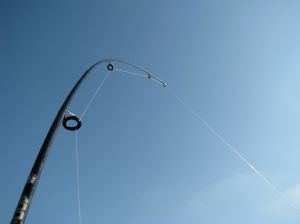
Good fishing rods have a high modulus, a high strength, and middle percentage of fibers. The higher the modulus, the more energy the rod can store and release. The energy is a way of the speed and the power of the rod. Most important differences in the structure of the composite graphite blanks are weight per square meter, the type of fiber, the amount of resin, and the specific direction, what make each rod kind unique and different. A high quality rod usually has a high modulus, a high strength and an intermediate percentage of fibers, a unique combination of materials that focus on four major factors: Durability, Strength, Flexibility, and Sensitivity.
Spinning rods can be used for trolling and still fishing with live bait, bottom-fishing, deep-sea fishing, but they work best for casting lures or bait. Spinning rods are excellent at casting, they more flexible than bait-casting rods. Spinning rods varying in 5 different Actions - the amount of movement the rod has when casting: Ultra Light, Light, Medium, Heavy, and Extra Heavy, that can handle a wide variety of species. The action should be correlated with the type and size fish that you intend to catch.
- Ultra Light Action best to use for Rainbow Trout, Smallmouth Bass, Perch, Crappie, and Pan fish, Sunfish
- Light Action are best for fishing in heavier current, targeting bigger Brook Trout, Smallmouth Bass, Largemouth Bass, Bluegill
- Medium Action are great for light trolling, Walleye, big Largemouth Bass, and Catfish
- Heavy Action good to use for trolling, fishing Northern Pike, Zander, Steelhead Trout, Carp family species and large Walleye, Largemouth Bass
- Extra Heavy Action good to use for Steelhead, Sockeye Salmon, heavy trolling, salt water fishing species like Striped Bass and Bluefish from inshore.
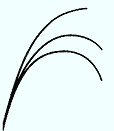
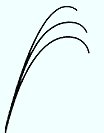
The guides of the spinning rods are smaller diameter rings than typical because the supple nature and thin diameter of braided line has a unique casting ability that mono and fluoro do not. Slick braided line shoots straight through these smaller guides (more like a baitcaster) for long distance casts. Longer spinning rods with grip handles for two-handing casting techniques are used for saltwater fishing Striped Bass and Bluefish from inshore, or Steelhead and Salmon fishing. The longer the rod, the greater the mechanical advantage in casting, allow you to cover wider area of water. Lengths allows to get you deep into the brush where large fish hide. Very Light Weight allows you to fish all day without arm fatigue.
Very long - great for drift fishing, extra sensitive - good for bottom bouncing and super light - excellent for casting comfort; these are the most flexible spinning rods.
Several helpful Tips
Never lift your catch, always play with the fish and use landing net to land it. Always extend and insert telescopic sections very gently, try do not extend them too forcibly, try to keep it off the ground to avoid dirt getting into the joints. Wipe it clean with a cloth before taking it down so you don't jam dirt into the joint, rinse rod with freshwater after using it in saltwater as soon as you can. Always remember to
take a good care of your rods and they will work for you for a very long time and will bring you large amount of catches and a huge amount of great emotions. More great emotions - longer and healthier is your life.
You should open and close the rod with a special care, always keep control of the rod sections. Telescopic rods can easily take even very heavy load, they are very strong and durable but they need to be handled with cared too. They usually don't break while fighting the fish but they could break while they are being closed without special care. Opening and closing these rods must be done very carefully and gently, no sideway pressure should be applied to the rod while closing it.
Opening Telescopic Rod.
Telescopic rods are very simple to open, but there are a couple of points to keep in mind to simplify the process and avoid damaging the rod:
- Uncover and remove the cap of guide along a line, otherwise it may break the fishing rod. Drill the fishing line through the bottom guide to the top guide through every guide. Any guide missing drilling may result in breaking the top end. If the fishing line is in disorder, don't draw the line forcibly. Dragging too forcibly on any point of the fishing rod may result in the break of fishing rod.
- Expose Section by section out the fishing rod from top, and screw the joint of two sections till they are tightly fixed.
- When fully pulling out the rod, align all the guides.
Closing Telescopic Rod.
Telescopic rods are closed in the opposite direction, starting with the bottom section and collapsing them all the way to the tip one. It's recommended to hold each section at its thickest point of the section which is near the joint.
- After use, loosen the joints in B section and draw in the fishing rod section by section from end.
- Insert the end section into the second section, the second section into the third section, etc., screw the joint of two sections till they are tightly fixed.
- Fix the fishing line reel, pull out the line and drill it from bottom guide to the top guide.
- After use, loosen the joints in B section and draw in the fishing rod section by section from end.
- To avoid becoming flexible, there is a 4-5mm gap between every connection. Don't ever forcibly insert the section.
If rod sections get stuck at a joint:
Occasionally a section may get stuck. The most frustrating things that can happen to a telescopic fishing rod (after braking) is to become jammed at a joint. This can happen due to dirt/mud/sand in the joint but the main cause of the joints fixed too tightly is extending the rod too forcibly.
Prevention is better than cure: try do not extend the rod too forcibly, try to keep your rod off the ground at all times to avoid dirt getting into the joints. Wipe it clean with a cloth before taking it down so you don't jam dirt into the joint. If you've been using it in saltwater give it a quick rinse with freshwater as soon after use as you can. Its a good idea to put a protectant like WD-40, Tackle Guard or a silicon lube on the joints.
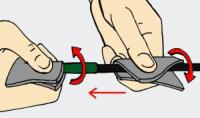

C. If the hot water technique fails try the next step up. Do the same as above but put ice on the small side of the joint to shrink it. This is easiest if you get some ice from your freezer place it on a cloth or towel and then wrap that around the rod and hold it while you heat the other side with hot water.
D. Try a penetrating lubricant like WD-40, CRC or Tackle Guard. Leave the joint to soak for an hour or two and then try gently to take the rod down.
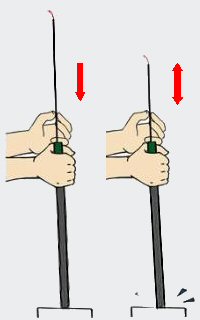
Take a good care of your rod.
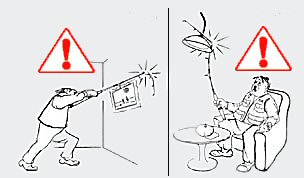

This is one of the most common causes of breakage and is 100% angler-caused
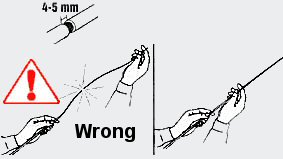

4. Be extra careful when getting your fishing rod out of the car, especially if it is a graphite rod. Too many people break their rod on the car door.
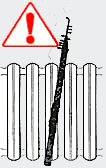
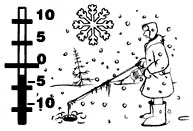
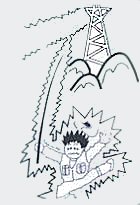
8. If you seal up the damp or sordid fishing rod, the moisture will possibly cause the bubbling or scaling off of lacquer. To prevent this, always rub off the moisture on fishing rod and keep it in a ventilated place. Never store a rod in its tube. Humidity can cause the moisture.
9. Always rub off the moisture, salt and dirt before storage.


Always remember to take a good care of your rods and they will work for you for a very long time and will bring you large amount of catches and a huge amount of great emotions. More great emotions - longer and healthier is your life.
Back to top


































